- ● homepage
- ● archives
- ● restoration
- ● books
- ● big banners
- ● post board
- ■ neo's search
- ■ about us
- ■ 게재방법 안내
- 개인정보처리방침

- [email protected]
- Tel. 02_335_7922
- Fax. 02_335_7929
- 10:00am~04:30pm
- 월요일~금요일
- 3/3(월) 대체공휴일

내일의 너 Thou To Be Seen Tomorrow
박영하展 / PARKYOUNGHA / 朴永夏 / painting 2023_0517 ▶ 2023_0617
● 위 이미지를 클릭하면 네오룩 아카이브 Vol.20140611f | 박영하展으로 갑니다.
별도의 초대일시가 없습니다.
관람시간 / 10:00am~06:00pm / 일,월요일 휴관
학고재 신관 Hakgojae Gallery, Space 2 서울 종로구 삼청로 48-4 Tel. +82.(0)2.720.1524~6 www.hakgojae.com @hakgojaegallery www.facebook.com/hakgojaegallery
학고재 오룸 Hakgojae OROOM online.hakgojae.com
내일의 너, 그 영원한 가능성 ● 장자(莊子, B.C. 360?-B.C. 280?)의 철학을 한마디로 요약하라면 만물제동(萬物齊同)이라고 대답할 수 있다. 만물제동은 "모든 것은 하나다(通爲一)."라는 뜻이며, 이 사상은 『장자(莊子)』의 「제물론(齊物論)」에서 자주 발견된다. 이는 "도에서 하나로 통한다(道通爲一)."라는 말이나 "만물과 나는 하나다(萬物與我爲一)."라는 말과 같다. 이러한 도리를 얻기 위해서 "천지자연의 밝음으로 나아가는 것이 최상(莫若以明)"이며, 반드시 "천지자연에 비추어보아야 한다(照之於天)." 그 도리를 얻고 나면 "자연의 균형에서 쉬게 된다(休平天均)." 그리고 그러한 진리는 어떤 언어로도 설명할 수 없어서 "그 대립의 짝을 얻을 수가 없는 것이다(莫得其偶)."

- 박영하_내일의 너 Thou To Be Seen Tomorrow_캔버스에 혼합재료_182×228cm_2023
그런데 듣기에나 좋을 이러한 말이 현대를 살아가는 우리에게 과연 의미가 있을까? 오히려 우리는 "연준은 금리를 인상하고, 소비자의 신뢰도는 떨어지고, 우크라이나에서는 전쟁이 터지고, 브라질에서는 가뭄으로 커피콩 수확이 줄어들고, 로테르담에서는 유가가 급격히 상승하고, 의회의 조제약 가격을 규제하는 새 의료 법안을 통과시키고, 미국의 무역적자는 신기록을 세운다."라는 주식에 관한 저명한 저서의 첫 구절처럼 살아간다.1) 그야말로 혼돈 자체이다. 그런데 장자를 지금 여기에 데려와서 저 문장을 읽게 하면 그는 어떻게 대답할까? 다음과 같이 대답할까? "연준이 금리를 인상하면 국채 등 자산을 매각해서 현금을 보유하고 전쟁 종식 후를 대비하여 건설주와 철근과 시멘트 등 현물 투자할 생각은 당분간 지양할 것이며, 차라리 브라질의 날씨를 관찰하여 비가 오기를 기다렸다고 비가 오면 스타벅스 주식을 사야할 것입니다. 조제약 가격이 고정되었으니 차라리 보험 회사에 투자할 것이며, 유가가 오르고 미국의 무역적자가 심각해지니 미국은 군수산업을 일으킬 것이고 전쟁은 당분간 지속될 것입니다. 그러니 철근이나 시멘트에 대한 투자나 건설회사 주식 매입은 생각도 하지 마십시오." 물론 그렇게 대답하지 않을 것이다. 차라리 장자는 "책과 미디어를 버리고 자기 마음으로 돌아가야 합니다. 그리고 본연의 마음으로 돌아가려면 천지자연에 마음을 비춰보아야 합니다."라고 대답할 것이다. 화가 박영하(朴永夏, 1954-)가 그리는 세계가 바로 그와 같다. 박영하 작가는 온갖 이론과 설명이 넘쳐나는 복잡한 미술현상에서 본연으로 돌아가 회화를 통해서 우리의 마음과 인식과 삶의 아름다움을 드러내는 작업을 지속한다.
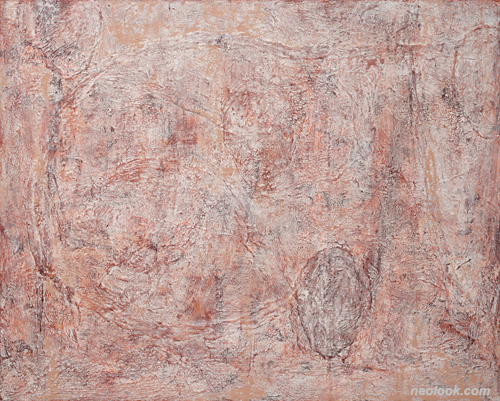
- 박영하_내일의 너 Thou To Be Seen Tomorrow_캔버스에 혼합재료_182×228cm_2023
박영하는 1954년생으로서 1980년대부터 한국현대미술화단의 주목을 받았다. 지금은 없어졌지만, 당시에는 화가를 평가하는 절대적 기준이었던 『대한민국미술대전』에서 1987년도에 특선을 했고, 이듬해에는 대상을 수상했다. 박영하가 추구하는 추상회화는 우리의 정서와 미감을 응축한 한국적 추상회화이다. 여기서 한국적 추상회화라는 뜻은, 조금은 특수한 뜻으로서, 화가의 말처럼 "자연 그대로의 색과 자연적으로 생겨난 흔적들과 유사한 표면의 느낌을 발견하여 화면에 구축하려는 의지를 담은 그림"이다. 실제로 작가는 산과 들에서 만나는 온갖 자연 대상과 바람과 빛과 소리의 자연스러운 흐름을 회화에 담고자 한다. 그것은 명료하게 드러나서 이미 알려진 대상이 아니라 문득 예기치 않게 발견된 진리의 흔적이다. 작가는 다음과 같이 말한다. ● 자연 그대로의 색과 자연적으로 생겨난 흔적들과 유사한 표면의 느낌은 자연스러움을 추구하는 나의 중요한 작업과정이다. 소박하면서도 자유롭게 숨 쉬는 삶의 공간으로서의 평면이 되고자하며, 바로 이것이 지금까지 끈질기게 추구하고 소원해온 회화적 지향점이라 할 수 있다.2)

- 박영하_내일의 너 Thou To Be Seen Tomorrow_캔버스에 혼합재료_131×163cm_2023
지금 서구 문화는 죽음에 취해 있다. 밀레니엄이라는 폐쇄의 느낌은 도통 사그라지지 않은 채 여전히 방향 부재에 시달리고 있다. 주지와 같이 지난 세기에 장 프랑수아 리오타르(1924-1998)는 이념의 죽음을 말했고, 다니엘 벨(1919-2011)은 산업사회의 종말을 철학적 의제로 선택했다. 롤랑 바르트(1915-1980)는 저자의 죽음을 말했으며, 미셀 푸코(1926-1984)는 인간의 죽음을 외쳤다. 심지어 알렉상드르 코제브(1902-1968)는 역사의 종언을 말했다. 모더니즘의 논의도 당연히 죽음의 논의를 비껴가지 못한다. 우리 동아시아에는 무시무종(無始無終)을 이야기한다. 우주의 본래 이치인 대아(大我)와 심체(心體)는 시작도 끝도 없이 항상 존재한다는 뜻이다. 이에 반해서 서구는 모든 것을 유한의 한계 내에 가두어 사유한다. 시간을 유한하게 바라보는 관점은 역사에 목적이 숨어있다는 믿음에서 비롯한 것이다. 가령, 이스라엘의 역사는 약속의 땅을 뜻하는 에레츠 이스라엘(Eretz Yisrael)이 역사의 목적이다. 이스라엘 사람들에게 예루살렘에서 살 수 있는 것은 축복이며, 예루살렘으로부터 벗어나 사는 것이야 말로 극형(極刑)이다. 전자를 알리야(Aliyah, ascent)라 부르며 후자를 예리다(Yerida, descent)라고 한다. 알리야가 실현되면 역사는 끝난다. 게오르크 빌헬름 프리드리히 헤겔(1770-1831)에게 역사는 절대정신의 실현과정이다. 절대정신이 이르면 역사는 종국을 맞이한다. 칼 마르크스(1818-1883)에게 역사는 인민의 투쟁이다. 인민이 더는 싸울 필요도 없이 자유를 얻으면 역사는 마지막 페이지를 끝맺게 된다. 이때 모든 사람은 아무런 걱정 없이 "아침에 사냥하고 오후에는 낚시를 즐기며 저녁에는 가축을 키우고 저녁 식사 후에는 비평을 한다. 엽사나 어부, 목동이나 비평가가 되는 일 없이 말이다."라고 말했던 마르크스의 예언을 누리게 된다. 이와 마찬가지로 조르조 바자리(1511-1574)는 그림의 역사가 정확한 재현을 성취할 때 종국에 이를 것이라고 보았으며, 클레멘트 그린버그(1909-1994)는 모더니스트 회화의 역사를 더는 환원될 수 없는 회화의 독자성(irreducible unique), 즉 평면성(flatness)의 본질이 확연히 드러나는 과정으로 이해했다. 역사는 사건의 기록이 아니라 이야기의 서사 구조를 갖는다는 것이다. 따라서 역사의 엔드(end)는 종국이자 목적이다.
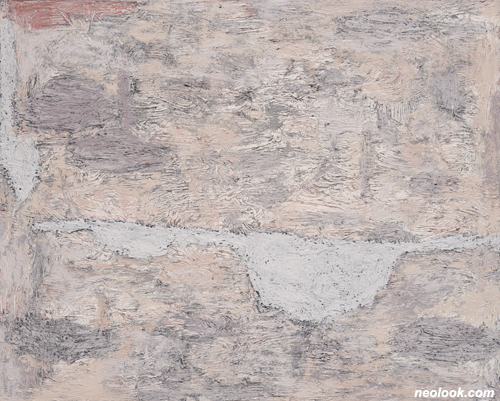
- 박영하_내일의 너 Thou To Be Seen Tomorrow_캔버스에 혼합재료_131×163cm_2023
동아시아의 역사의식에서 목적이나 네러티브는 존재하지 않았다. 다만, 학자들은 역사에 실존했던 대동(大同)이나 요순의 재현을 이루어야 한다는 사명감을 지니고 있었다. 마찬가지로 예술도 사명감으로 이해했다. 이것이 천명의식(天命意識)이다. 동아시아의 예술은 네 가지 단계로 나뉘게 된다. 그것은 죽음의 과정이 아니라 삶의 과정으로서 자(疵)․온(穩)․순(醇)․화(化)의 단계를 거친다. 동아시아에서 글씨나 그림, 문학은 모두 이 네 경지의 점진적 이동을 지향한다. 갑작스러운 돈오(頓悟)는 종교에서나 가능한 것이다. 동아시아에서 천재라 할지라도 예술 속에서는 단계를 거친다. 처음으로 예술을 배울 때 자기가 하고 싶은 대로 붓이 움직이지 않는다. 글쓰기나 그림이 불능자여(不能自如)하다. 글씨의 결체(結體)가 단정하지 않으며 고르지도 않다. 왜곡되거나 잡박불순하다. 이를 자경(疵境)이라고 한다. 모든 사람은 이 단계를 벗어날 수 없다. 그런데 어떤 사람은 천부적 재능을 부여받고 태어난다. 그 사람이 근면하게 글쓰기를 실현하면 보통사람과 다른 글씨를 쓰게 된다. 더구나 옛 서보(書譜)와 비첩(碑帖)을 연구하여 임모(臨摹)를 진행하면 붓의 운용이 비교적 순조롭게 된다. 글씨나 그림이 평정(平正)하며 짜임새를 얻은 [工穩] 경지인바 이를 온경(穩境)이라고 한다. 이러한 글씨와 그림은 규범과 법칙에 부합된다. 그런데 여기에 심금을 울리는 무언가 정취가 없다. 독창적 오리지널리티가 없기 때문에 심금을 울리지 않을지도 모른다. 글씨나 그림을 배우는 대부분 사람들이 여기서 멈추게 된다. 그런데 여기서 그치지 않고 각 시대의 비판첩찰(碑版帖札) 등 모든 글씨와 역대 화보(畵譜)의 장점을 모두 종합하여 연구하여 자기의 길을 닦은 사람은 자기만의 풍격을 이루게 되는데, 글씨와 그림이 자유(自由)를 얻게 된다. 스스로 원하는 바에 말미암아 예술이 풍격을 이루는 것이다. 이것이 순경(醇境)이다. '순(醇)'이란 진한 술을 뜻한다. 진국이다. 동시에 변치 않는 순수함을 뜻하기도 한다. 어떤 글씨는 메말랐으며 어떤 글씨는 비대하다. 어떤 것은 습윤하며 어떤 것은 갈필이다. 때로는 기이하며 때로는 바르다. 이를 서예의 대이론가 포세신(包世臣, 1775-1855)은 "가품(佳品)" 혹은 "능품(能品)"이라고 칭했다. 그러나 지극히 아름다운 작품도 궁극적인 경지에 다다르지 못한다. 아직 장(匠)이라는 범주에 묶여 있기 때문이다. 장의 범주에서 해방되려면 예술가가 모종의 사상을 품고 있어야만 한다.

- 박영하_내일의 너 Thou To Be Seen Tomorrow_캔버스에 혼합재료_163×131cm_2023
예술가에게 사상이란 거창한 철학이 아니다. 자기가 살아 숨 쉬는 시대와 사람들을 위한 애착과 진리의 발언을 뜻한다. 그 진리와 아름다움이 갈마들어 성숙될 때 비로소 화경(化境)이라 할 수 있다. 학문과 수양이 성숙된 뒤 기술과 용법의 모든 규모를 초월할 때, 화경의 진리가 펼쳐진다. 화경을 소유한 예술가들은 은일(隱逸)만을 추구하지는 않는다. 세상에 나와서 사람들의 슬픔과 기쁨이 이합하는 정조를 함께하기도 하며(인문을 즐기며), 산천풍운(山川風雲)의 자연을 사랑하는 동시에, 죽는 날까지 철학적 사유에 자신을 담금질한다. 이러한 격조가 글씨나 그림의 행간에 스며들게 된다. 이를 포세신은 "신품(神品)"이라고 말한다. 글씨로 치면 왕희지(王羲之, 307-365)의 「난정서(蘭亭序)」가 신품이며, 시로 치면 초나라 굴원(屈原, B.C. 343?-B.C. 278?)이 지은 장편 서정시 「이소(離騷)」가 신품이다. 소식(蘇軾, 1036-1101)이 지은 「제서림벽(題西林壁)」이 있는가 하면, 김정희(金正喜, 1786-1856)의 「부작란도(不作蘭圖)」 역시 신품이다.

- 박영하_내일의 너 Thou To Be Seen Tomorrow_캔버스에 혼합재료_150×150cm_2023

- 박영하_내일의 너 Thou To Be Seen Tomorrow_캔버스에 혼합재료_61×150cm_2023
박영하는 어린 나이에 자경을 벗어날 수 있었으며, 온경의 경지에서 화단의 인정을 받았다. 그러나 시시각각 변화무쌍한 대자연의 숨결을 느끼고서 예술의 자유를 생각하게 되었다. 발견(發見)은 영어로 디스커버(dis-cover)이다. 말 그대로 이불을 걷어치운다는 뜻이다. 습관은 솜이불과 같다. 날카로운 구석을 감싸며 잡음을 줄여준다. 그것은 지각을 마비시킨다는 의미에서 비미학적(unaesthetic)이다. 그 말의 어원인 그리스어 'aithesthai'가 지각이라는 뜻에서 그렇다. 이불은 구석이나 소음과 같은 정보를 차단한다. 따라서 모든 것이 편안하다. 습관은 모든 것을 편하고 조용하게 한다. 주위의 편안한 모든 것은 정취 있게 다가온다. 정취는 조국과 관련된다. 그런데 솜이불을 들추어내면 정취는 사라지고 고통이 다가오게 된다. 이때 사물의 진상이 발견된다. (dis-covered) 이불이 들추어졌기 때문에 모든 것이 불안하다. (un-settling) 발견은 그리스어로 망각(습관)의 강을 건너서 이제는 본래 정신으로 돌아온 'aletheia'이며, 따라서 이는 진리로 번역된다.3) 박영하는 1990년대 한국현대미술화단을 대표하는 작가로서 온경의 경지에서 만족하지 않고 낯선 오스트레일리아로 활동무대를 확장했다. 그곳에서 낯선 풍경과 문화, 특히 오스트레일리아 원주민(Australian Aborigine)의 태고의 회화는 서구 현대미술이나 동아시아에서 볼 수 없었던 자유의 아름다움을 느끼게 해주었다. 얽매임도 목적도 없었다. 자유로운 유희이면서도 누구에게 보여주거나 의식해서 만든 것이 아니라 대대(對待)가 없는 경지였다. 작가가 그동안 싸매고 있던 솜이불은 마침내 들춰졌다. 내가 나일 수 있었던 내가 사라졌다. 작가는 우리나라와 오스트레일리아를 오가며 더 넓게 보고 더 깊게 느낄 수 있었다.

- 박영하_내일의 너 Thou To Be Seen Tomorrow_캔버스에 혼합재료_27.5×22cm_2023
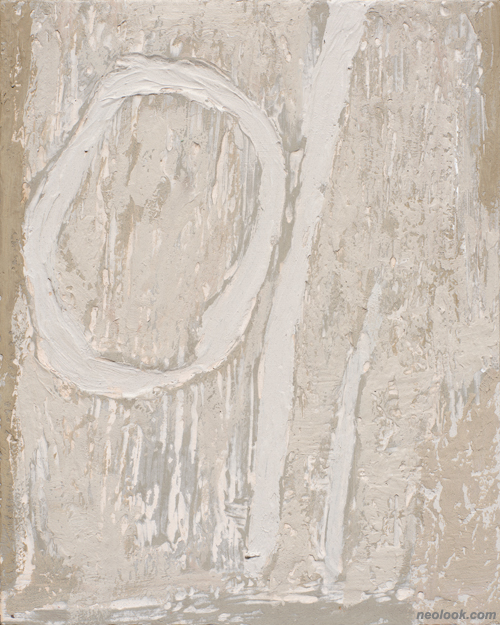
- 박영하_내일의 너 Thou To Be Seen Tomorrow_캔버스에 혼합재료_27.5×22cm_2023
세상을 나의 기준과 나라는 관념에서 바라보면 진리일 수 없다. 그것을 이아관물(以我觀物)이라고 한다. 세상을 사물의 관점에서, 사물의 본성으로 바라보는 것을 이물관물(以物觀物)이라 한다. 이 둘에 관해서 말해준 사람이 소옹(邵雍, 1011-1077)이다. ● 세상을 사물의 본성으로 바라보는 것은 성(性)이다. 세상을 나의 기준에 다라 보는 것은 정(情)이다. 성은 치우침 없이 밝고, 정은 치우치고 어둡다.4) ● 이물관물은 사물의 본성에 입각하여 사물을 비추는 것이다. 본성[性]의 객관적 증험이 이루어진다. 이아관물은 주관적 의식과 바람으로 사물을 응시한다. 이때 걸러지지 않은 감정[情]이 체현된다. 이아관물에서 비롯한 회화작품은 주관 의식의 격정이나, 아니면 무의식의 심연에서 건져 올린 우연에 기대게 되기 때문에 편파적이며 어둡다. 소옹은 "나로써 사물을 대하지 않으면 사물로써 사물을 대할 수 있게 된다. 나에게 맡기면 정이 일어난다. 정이 일어나면 폐단이 생기고 폐단이 생기면 어두워진다. 사물에 인하면 성이 드러나고 성이 드러나면 신과 회통하니 밝아지는 것이다."라고5) 말한다. 소옹은 나의 감정에 맡겨두는 것을 임아(任我)라고 했다. 이에 반해 인물(因物)은 사물의 관점으로 사물을 보는 것이다. 대부분의 예술가는 임아의 관점에서 끝난다. 그러나 인물의 관점에서 세계를 보고 다시 회화의 역사를 보고 다시 자기를 심리적 거리를 두고 바라볼 수 있는 경지이다. 즉, 소옹은 보는 것에는 세 가지 층위가 있다고 말한다. 하나는 눈으로 보는 것이고, 더 나아가 마음으로 보는 것이고, 최종적으로 이치로 보는 것이다. 박영하는 추상회화의 이치로 사물의 진리를 발견한다. 가장 자연스러운 경지를 추구하며 바람의 흔적, 소리의 자취, 시시각각 갈마드는 빛과 그림자의 유영을 나타낸다. 동식물의 자연스러운 정취를 나타낸다. 모든 것이 하나가 되어 서로 통하는 경지이다. 따라서 박영하의 회화를 한마디로 요약하라면, 편견이나 습관, 자아를 강조하지 않고 사유를 위한 사유마저 지양하여, 통일된 경지로서의 자연에 모든 것을 맡겨버리는 인물(因物)의 회화인 것이다. 나아가 최종적으로 소옹은 사물을 바라보는 최고의 경지를 가리켜 반관(反觀)이라고 했다.

- 박영하_내일의 너 Thou To Be Seen Tomorrow_캔버스에 혼합재료_27.5×22cm_2023
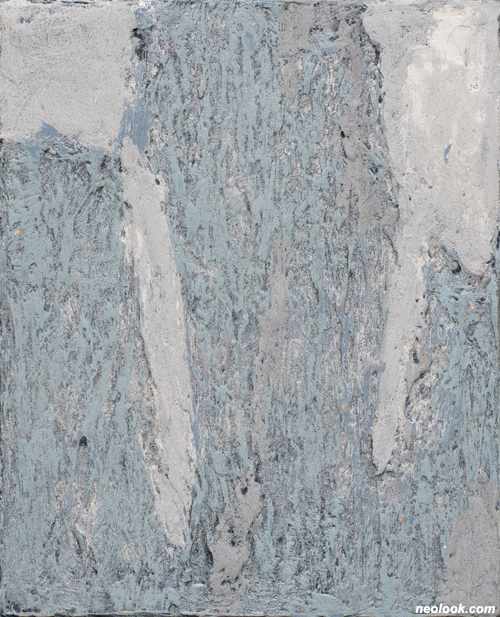
- 박영하_내일의 너 Thou To Be Seen Tomorrow_캔버스에 혼합재료_27.5×22cm_2023
거울의 능력이 사물을 밝힐 수 있음에 있음인 바 그것의 능력은 만물의 형태를 숨기지 않는다. 그러나 거울이 만물의 형태를 숨기지 않는다 해도 물의 표면이 만물의 형태를 하나로 드러내는 것만 못하다. 그러나 물이 만물의 형태를 드러난다고 해도 성인이 만물의 정을 하나로 드러내는 것만 못하다. 이는 성인의 반관으로 살펴볼 수 있는 능력에 비롯한다. 반관으로 살핀다는 것은 나로써 사물을 보는 것이 아니다. 나로서 사물을 바라보지 않는 것은 사물을 사물로서 바라보는 것이다. 사물로 사물을 바라보니 그 사이에 어찌 내가 자리할 수 있겠는가? 이는 내가 타인이며 타인이 곧 나이고 나와 타인 모두 사물임을 아는 지혜이다.6) ● 옛날에 사용했던 동거울은 반관의 뛰어난 예시이다. 그러나 만물의 윤곽만을 드러낸다. 물은 보다 명료하게 사물의 형상을 드러내는데 만물의 외형만을 비출 뿐이다. 성인의 심경은 만물의 모든 사정을 비춘다. 이는 주관적 정감이 아니다. 이는 무아(無我), 그리고 나와 만물이 하나가 되는 경지(齊我與萬物而爲一)에서 가능한 경지이다. 내가 사물이고 사물이 나인 경지이다. 역지사지(易地思之)라는 말이 있다. 소옹 역시 "역지이처(易地而處), 즉 서로의 처지를 바꾸면, 곧 무아의 경지에 돌입할 수 있다(則無我也)."라고 말한다. 박영하의 회화는 화가라는 대아(大我)를 덜어내 자연과 사건, 즉 사사물물(事事物物)에 합일되어 자연의 자취를 회화에 담으려는 영원한 기획이다. 따라서 작가는 다음과 같이 말한다. ● 나에게 있어 추상회화는 무한한 자유와 새로운 발견이다. 비형상적인 형태 사이의 시각적 긴장, 색채, 질감, 움직임, 축적되어가는 과정, 모든 것들이 화면을 만들어낸다. 이미 나타난 것이 아닌, 나타내려는 하나의 발견을 기대하며 각기 새로운 작업에 임하는 동시에 원초적 숨결로서의 평면의 존재감을 확고히 하고자 한다. 나의 작업에 주로 사용되는 색은 나에게 있어서 하나의 자연이다.7)

- 박영하_내일의 너 Thou To Be Seen Tomorrow_캔버스에 혼합재료_27.5×22cm_2023

- 박영하_내일의 너 Thou To Be Seen Tomorrow_캔버스에 혼합재료_27.5×22cm_2023
다시 장자로 돌아와서, 「제물론」에는 "기분야, 성야(其分也,成也). 기성야, 훼야(其成也, 毀也)."라는 말이 등장한다. 풀줄기처럼 약한 것과 큰 기둥처럼 강한 것, 문둥이처럼 추한 사람과 서시(西施)처럼 아름다운 미인을 들고 또 세상의 온갖 이상한 것들[恢恑憰怪]에 이르기까지 도리[道]는 모든 것을 하나로 통해서 하나가 되게 한다. 하나인 도리[道]가 분열하면 상대세계의 사물이 성립하고, 상대세계의 사물이 성립되면 그것은 또 파괴된다. 따라서 모든 사물은 성립과 파괴를 막론하고 도리에 의해 다시 통해서 하나가 된다. 오직 통달한 사람이라야만 통해서 하나가 됨을 안다. 이 때문에 인간 세계의 습관이나 편견을 쓰지 않고, 용(庸), 즉 상주불변(常住不變)의 자연에 모든 것을 맡긴다. 용(庸)이란 작용이고, 작용이란 통함이고 통함은 자득함이니 자득의 경지에 나아가게 되면 도리[道]에 가깝다. 절대의 시(是)에 말미암을 따름이니 그렇게 할 뿐이고 그러한 까닭을 알지 못하는 것을 또 도리[道]라고 부른다.8)

- 박영하_내일의 너 Thou To Be Seen Tomorrow_캔버스에 혼합재료_26×18cm_2023

- 박영하_내일의 너 Thou To Be Seen Tomorrow_캔버스에 혼합재료_24.5×18cm_2023
박영하 작가의 회화 속으로 언뜻언뜻 비추는 크고 작은 형상은 풀(莛)을 연상시키고 기둥(楹)을 연상시킨다. 그 속에는 훼궤휼괴(恢恑憰怪)의 온갖 형상이 현미무간(顯微無間)을 이룬다. 박영하의 모든 회화 작품 속에는 장자와 혜시(惠施, B.C. 370?-B.C. 309?)가 논했다는 물고기[鯈鱼]의 진정한 자유가 담겨있다. 따라서 박영하 작가는 주어진 천명에 관해서 다음과 같이 말한다. "이 시대를 살아가는 한 사람으로서 내가 그림을 통해 발견한 사명이 있다면, 그것은 순수함과 자연스러움의 발현 과정인 『내일의 너』를 인류에게 제시하는 것이다." 박영하 작가는 순수한 자연에 모든 것을 맡길 줄 알며 나라는 시름을 잊어버린 진정한 자유에서 새로운 회화가 열릴 것이라고 말하고 있다. ■ 이진명
* 각주 1) 피터 나바로, 『브라질에 비가 내리면 스타벅스 주식을 사라』, 이창식 옮김(서울: 에프앤미디어, 2023, 11쇄), 17. 2) 박영하, 『작가노트』, 2023. 3) Vilém Flusser, Writhings (Minneapolis: the University of Minnesota Press, 2002), 105. 4) 邵雍, 『邵雍前集』: "以物观物, 性也. 以我观物, 情也. 性公而明, 情偏而暗." 5) 邵雍, 『邵雍前集』: "不我物则能物物. 任我则情, 情则蔽, 蔽则昏矣. 因物则性, 性则神, 神则明矣." 6) 邵雍, 『邵雍前集』: "夫鉴之所以能为明者, 谓其能不隐万物之形也. 虽然鉴之能不隐万物之形, 未若水之能一万物之形也. 虽然水之能一万物之形, 又未若圣人之能一万物之情也. 圣人之所以能一万物之情者, 谓其圣人之能反观也. 所以谓之反观者, 不以我观物也. 不以我观物者, 以物观物之谓也. 既能以物观物, 又安有我于其间哉? 是知我亦人也, 人亦我也, 我与人皆物." 7) 박영하, 『작가노트』, 2023. 8) 『莊子』 「齊物論」: "故為是舉莛與楹, 厲與西施, 恢恑憰怪, 道通為一. 其分也, 成也; 其成也, 毀也. 凡物無成與毀, 復通為一. 唯達者知通為一, 為是不用而寓諸庸. 庸也者, 用也; 用也者, 通也; 通也者, 得也. 適得而幾矣. 因是已. 已而不知其然, 謂之道."
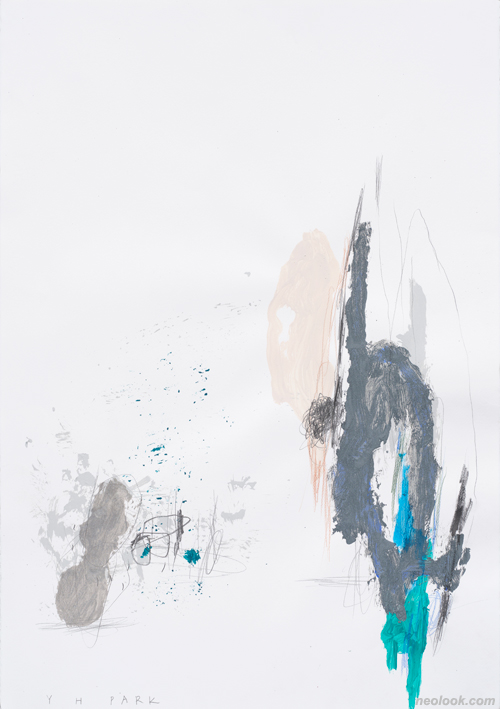
- 박영하_내일의 너 Thou To Be Seen Tomorrow_종이에 혼합재료_100×70cm_2023
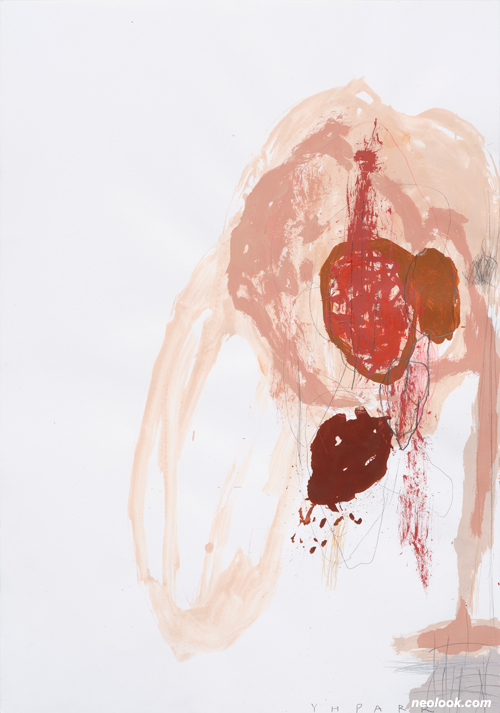
- 박영하_내일의 너 Thou To Be Seen Tomorrow_종이에 혼합재료_100×70cm_2023
The Eternal Possibilities for the Future You ● If I were asked to summarize the philosophy of Zhuangzi (B.C. 360?-B.C. 280?) in one word, I would say "everything is equal." This means "all things are melded as one" and found frequently in Chapter Two "Discussion of the Equality of Things" of Zhuangzi. It has the same meaning as "the Way penetrates these and makes them one" and "the myriad things and I are one." To attain the Way, "there is nothing like using clarity" and we must "shed light from heaven to depend on affirmation." After reaching the Way, the sage "rests in the heavenly balance." However, such truth cannot be explained in any language and therefore "that and this cannot obtain their counterparts." ● Do such good-sounding words have any meaning for us today? We live our lives as set forth in the first sentence of a famous book on stock market. To wit: "The Fed raises interest rates, consumer confidence falls, war breaks out in Ukraine, coffee harvests are down due to drought in Brazil, oil prices skyrocket in Rotterdam, a new medical bill regulating prices of pharmaceuticals passes through Congress, and the US trade deficit hits a record high."1) It is truly chaos itself. If Zhuangzi were here today and were asked to make some comments after reading the sentence, how would he respond? Would he say something like this? "If the Fed raises interest rates, you should sell assets and hold cash, avoid making investments in-kind such as construction, steel, or concrete for the time being to prepare for the post-war period and rather wait until it rains in Brazil while observing the weather in Brazil and buy Starbucks stock when it rains. Since the prices of pharmaceuticals are regulated, invest in insurance companies instead. Because oil prices are rising and the US trade deficit is surging, the US will increase military spending and the war will continue for a while. So, do not even think about investing in steel or concrete or buying construction company stocks." Of course, Zhuangzi would never say anything like that. Rather, he would say, "Get away from books and media and return to your own mind. In order to return to your true mind, you should direct your mind to your heavenly nature." This is the world that Park Young-ha (1954- ) depicts in his paintings. Amidst the chaotic art scene overflowing with various theories and explanations, Park Young-ha continues to reveal the beauty of our hearts, perceptions, and lives through painting, by going back to true self. ● Born in 1954, Park Young-ha has enjoyed the spotlight in the Korean contemporary art world since the 1980s. Park won the Special Prize in 1987, and the Grand Prize in 1988 at the Korean Art Exhibition, the most prestigious competition and the gold standard for evaluating painters at the time. Park Young-ha creates Korean-style abstract painting, which condenses the emotions and aesthetics of the Korean people. "Korean-style abstract painting" here has a somewhat special meaning. As Park says, it means "paintings that embody the painter's aspiration to discover the feelings of the surface that are similar to the colors of nature and traces of natural phenomena and embody them on the canvas." Actually, Park tries to capture every aspect of nature he encounters in mountains and plains, natural movements of the wind, light, and sound in his paintings. They are traces of truth that are discovered unexpectedly rather than objects that are already known. The artist says: ● Using colors as they are in nature and the feeling of a surface similar to traces of natural phenomena are an important process of my work that pursues naturalness. My paintings aspire to become 2-dimensional surfaces as space for life that is simple yet breathes freely, which I have sought persistently and cherished as a goal of my painting.2) ● Western culture today is intoxicated with death. The feeling of collapse known as the Millennium has not disappeared; there is still a great lack of direction. As we all know, Jean-François Lyotard (1924-1998) talked about the end of ideology and Daniel Bell (1919-2011) declared the end of ideology as agenda of philosophy. Roland Barthes (1915-1980) talked about the death of the author, and Michel Foucault (1926-1984) clamored for the death of humanity loudly. Alexandre Kojève (1902-1968) even discussed the end of history. To be sure, modernist discourse cannot be free from the discourse on death. In East Asia, we talk about eternity. Here by eternity, we mean that the 'concept of self' and 'mind and body,' which form the essence of the universe, always exist without beginning or end. In contrast, the Western philosophers confine everything within the limits of finite existence. This Western perspective of looking at time as finite originated from the belief that history has a hidden purpose. For example, the history of Israel has a goal of achieving Eretz Yisrael, meaning a promised land. For Israelis, living in Jerusalem is a blessing, while living away from Jerusalem is the ultimate punishment. The former is called "Aliyah, ascent" and the latter is called "Yerida, descent." When Aliyah is attained, history ends. Georg Wilhelm Friedrich Hegel (1770-1831) thought that history is the process of realization of the 'Absolute Spirit. When the final sate of the Absolute Spirit is reached, history comes to an end. For Karl Marx (1818-1883), history is about the struggle of the people. When the people win freedom and no longer need to fight, history concludes its final chapter. Then, without any cares, all the people will "enjoy hunting in the morning and fishing in the afternoon, raising livestock in the evening, and engaging in debates after dinner. And they need not be hunters, fishermen, shepherds, or critics to do all these things," as Marx prophesied. Likewise, Giorgio Vasari (1511-1574) believed that the history of painting would reach the ultimate end when it achieves precise reproduction. More recently, Clement Greenberg (1909-1994) understood the history of modernist painting as being an irreducible unique process that reveals the essence of flatness. This means that history has a narrative structure of a story and is not a record of events. Therefore, the end of history is a conclusion and purpose at the same time. ● There exists neither purpose nor narrative in the historical consciousness of East Asian philosophy. However, scholars had a sense of obligation that they should reproduce "The Great Unity," a Chinese utopian vision of the world in which everyone and everything is at peace, and the virtuous governance of Yao and Shun, which appear in the Chinese history. This is the consciousness of the "Mandate of Heaven." East Asian art is divided into four stages: imperfection, serenity, ingenuity and transcendence. In East Asia, calligraphy, painting, and literature all pursue gradual progress through these four stages. Sudden enlightenment is possible only in religion, not in art and literature. In East Asia, even a genius artist undergoes these four stages. When learning about art for the first time, the future artist finds his or her brush does not move as he or she intends. For beginners, writing or painting in the way he or she wants is impossible. The style of calligraphy is neither neat nor even. The characters are distorted and imperfect. This stage is called imperfect realm. Everyone experiences the difficulties of this first stage. However, some people are born with great talent, and if they diligently practice calligraphy, they eventually manage to create characters that are different from those of ordinary people. If they go one step further and study ancient masterpieces of calligraphy and inscriptions and copy them, they can use brushes more smoothly. The calligraphy and painting become smooth and neat when they reach this stage of serenity. Such calligraphy and painting conform to norms and rules but lack emotional resonance because of the absence of originality. Most people learning calligraphy or painting stop at this second stage. But there are some who continue to practice and incorporate the strengths of all the calligraphies and paintings from different periods, including inscriptions on steles and documents, eventually going on to create their own elegant style. Their calligraphies and paintings assume a certain freedom. In other words, they attain their own artistic styles filled with dignity. This means that their work is "genuine" and at the same time assumes a "pureness" that will never change. Looking at calligraphies from this third stage, some characters are thin and others are thick. Some are wet and others are dry. Some look strange and others proper. Bao Shichen (1775-1855), a great scholar of Qing China, praised it as "excellent or outstanding quality." Nonetheless, even an extremely beautiful artwork at this stage cannot reach the ultimate in excellence because it is still bound by craftsmanship. In order to let his or her work transcend craftsmanship, the artist must adhere to a certain philosophy. ● For an artist, philosophy doesn't need to be grandiose. It means speaking the truth with affection for the era in which one lives and for the people who live in it. Only when the truth and beauty mature into a harmonious unity can it be called a "transcendental realm." When scholarship and cultivation reach maturity, the truth of the transcendental realm unfolds beyond all dimensions of technology and skills. Artists who succeed in entering the transcendental realm do not pursue only seclusion. Coming out into the world, they enjoy art and literature by joining others in sharing joys and sorrows, while loving the mountains and rivers, and the winds and clouds. They refine themselves through philosophical contemplation until their last breath. Such refinement of personality permeates into the lines of their calligraphy and paintings. Bao Shichen called such works "divine creations." In calligraphy, Lantingji Xu" (Preface to the Poems Composed at the Orchid Pavilion) by Wang Xizhi (307-365), and in poetry, the epic poem Li Sao (Encountering Sorrow) by Qu Yuan (B.C. 343?-B.C. 278?) from the Warring States period are "divine creations." Also defined as such are the Poem on the Wall of the West Forest by Su Shi (1036-1101) and Bujakrando (A Painting of Orchids without Orchids) by Kim Jeong-hui (1786-1856). ● Park Young-ha was able to rise out of the "realm of imperfection" at a young age. He became widely recognized in the art world for his talent when he reached the second stage of serenity. However, he began to think about the freedom of art after experiencing the ever-changing breath of nature, that is, discovery. "Dis-cover" literally means to remove the blanket or cover. Habits are like a cotton blanket. They wrap around sharp edges and reduce noise. This is unaesthetic in that it numbs perception. All the more so as it originated from the Greek word "aithesthai," which means perception. Cotton blankets block information such as corners or noise, making everything comfortable. Habits make everything comfortable and quiet. Everything comfortable around us comes to us with ambiance that conjures up one's homeland. However, when the blanket is removed, such homely ambience disappears and pain arises. Then, the truth of things is dis-covered. When blankets are removed, everything feels un-settling. "Discovery" in Greek is "aletheia," which means to cross the river of forgetfulness or habits and return to the original mind, which is translated as truth.3) Without being satisfied with reaching the second stage of serenity when he was recognized as a representative artist of Korean modern art in the 1990s, Park Young-ha left for Australia, a country unfamiliar to him. The strange landscape and culture, especially the ancient paintings of the Aborigines allowed him to feel the beauty of freedom that could not be seen in Western or East Asian contemporary art. There was no binding or purpose in the art of the Aborigines. It was free play and yet was neither made for somebody to see nor to be conscious of others. It was a state without comparison. The blanket Park Young-ha had covered himself was finally lifted. In other words I, who could be me, disappeared. ● If we look at the world from our own standards and perspectives, there cannot be truth. This is "to observe things from my perspective." On the other hand, we can "observe things as they are." It was Shao Yong (1011-1077), a great scholar of Northern Song China, who discussed the two different ways to observe things: ● Observing things as they are is objective. Observing things from one's own perspective is subjective. Objectivity is transparent, but subjectivity is biased and obscure.4) ● Observing things as they are is to reflect on the things based on their inherent nature. It involves objective proof of the essence of things. On the other hand, observing things from one's own perspective involves subjective consciousness and desire, and at this point unfiltered emotions are embodied. Paintings based on subjective observation are partial and dark because they rely on the artist's subjective consciousness or changes arising from the depth of the unconsciousness. Shao Yong said, "If I do not face things as myself, I can face them as things. If I entrust them to myself, there arises subjectivity. When there arises subjectivity, there arises bias, and with bias comes darkness. When I face things as they are, objectivity reveals itself, and when objectivity is revealed, I can communicate with gods, so it becomes brighter."5) Shao Yong said entrusting things to one's emotions is to "let me do as I please." In contrast, we can see things from the perspective of things themselves. Most artists end up entrusting things to their emotions. However, observing things as they are is to see the world from the perspective of things and then to see the history of painting again and to be able to look at oneself with psychological detachment. According to Shao Yong, there are three levels of seeing things: seeing with eyes, seeing with the mind, and ultimately seeing with reason. Park Young-ha discovers the truth of things with reason of abstract painting. Pursuing the most natural state, Park depicts the traces of wind, the traces of sound, and the constantly changing movements of light and shadow. He represents the natural atmosphere of plants and animals. It is a realm where everything becomes one and interactive. To summarize, Park Young-ha's paintings entrust everything to nature as a unified state, without thinking for thinking's sake, without focusing on prejudice, habits, or the conscious "I." Finally, Shao Yong referred to the highest level of seeing things as "self-reflection." ● The reason why a mirror can reflect things clearly is that it does not conceal the forms of all things. Although a mirror can reflect things clearly, it is not as capable as water in reflecting the forms of all things. Although water can reflect the forms of all things, it is not as capable as a sage in understanding the feelings of all things. The reason why a sage can understand the feelings of all things is that he has the ability to reflect upon himself. This ability to reflect upon oneself is not the same as observing things from one's own perspective. To observe things not from one's own perspective but from the perspective of the things themselves is called 'observing things as they are'. Since one can observe things as they are, how can there be 'me' in the midst of it? Therefore, I am a human being and the human being is also me. And both I and human beings are things.6) ● The bronze mirror used in ancient times is an excellent example of self-reflection, or power of objective observation. However, it reveals only the outline of things. Water, on the other hand, more clearly reflects the form of things, but it reveals only the external appearance of things. A sage reflects the essence of all things, including their mental state. This is not a subjective emotion, but a stage of being where oneself and all things become one. It is a state where one is the thing and the thing is oneself. We have all been told about "putting oneself in another's shoes." Shao Yong also said, "If we change our position with others, we can immediately attain a state of perfect self-effacement." The ultimate goal of Park Young-ha's paintings is to capture the traces of nature in his paintings by eliminating 'the concept of self' called painter to merge with nature and events. The artist says: ● To me, abstract painting means infinite freedom and discovery of new things. All things – visual tension between non-figurative forms, colors, textures, movements, and process of accumulation – are involved in creation of my work on the canvas. I approach each new work with the expectation of discovering something that has not yet appeared. At the same time, I seek to firmly establish the existence of the 2-dimensional plane as something essential as the breath of life. The colors I mainly use on my work are nature to me.7) ● Let's return to Zhuangzi. In the Chapter "Discussion of Equality of Things." It states, "There is no thing that is not so, no thing that is not admissible. Hence a stalk of grass could be a pillar, a leper could be Xi Shi, mysterious and strange. The Way penetrates these and makes them one. That which is partial is completed; that which is completed degenerates. All things, without completion or degeneration are once again melded as one. Only the wise know how they are melded as one. By this, it is not used, yet lodges itself in the commonplace. The "commonplace" is "used." "Used" is freely penetrating; free penetration is attainment. Appropriately attaining it, one is close. Based on this, one is finished. Being finished without being aware that this is so, is called the Way.8) ● In Park Young-ha's paintings are large and small shapes reminiscent of grass and pillars. Inside them are all kinds of strange shapes that are intricately intertwined. The true freedom of fish known to have been discussed by Zhuangzi and Hui Shi (B.C. 370?-B.C. 309?) is embodied in all of Park Young-ha's paintings. As to his mission, Park Young-ha says, "If there is a mission that I have discovered through painting as a person living in this era, it is to present the 'Future You,' which is the manifestation process of purity and naturalness, to humanity." He is talking about new painting that will open up when we have true freedom with all worries about oneself having been forgotten while knowing how to entrust everything to pure nature. ■ Lee Jin-myeong
* footnote 1) Peter Navarro, translated by Lee Chang-sik, If It's Raining in Brazil, Buy Starbucks, Seoul: F & Media, 2023, 11th impression, page 17. 2) Park Young-ha, Artist's Statement, 2023 3) Vilém Flusser, Writhings, Minneapolis: the University of Minnesota Press, 2002, p. 105. 4) 邵雍, 『邵雍前集』: "以物观物, 性也. 以我观物, 情也. 性公而明, 情偏而暗." 5) 邵雍, 『邵雍前集』: "不我物则能物物. 任我则情, 情则蔽, 蔽则昏矣. 因物则性, 性则神, 神则明矣." 6) 邵雍, 『邵雍前集』: "夫鉴之所以能为明者, 谓其能不隐万物之形也. 虽然鉴之能不隐万物之形, 未若水之能一万物之形也. 虽然水之能一万物之形, 又未若圣人之能一万物之情也. 圣人之所以能一万物之情者, 谓其圣人之能反观也. 所以谓之反观者, 不以我观物也. 不以我观物者, 以物观物之谓也. 既能以物观物, 又安有我于其间哉? 是知我亦人也, 人亦我也, 我与人皆物." 7) Park Young-ha, Artist's Statement, 2023 8) 『莊子』 「齊物論」: "故為是舉莛與楹, 厲與西施, 恢恑憰怪, 道通為一. 其分也, 成也; 其成也, 毀也. 凡物無成與毀, 復通為一. 唯達者知通為一, 為是不用而寓諸庸. 庸也者, 用也; 用也者, 通也; 通也者, 得也. 適得而幾矣. 因是已. 已而不知其然, 謂之道.
Vol.20230517e | 박영하展 / PARKYOUNGHA / 朴永夏 / painting

